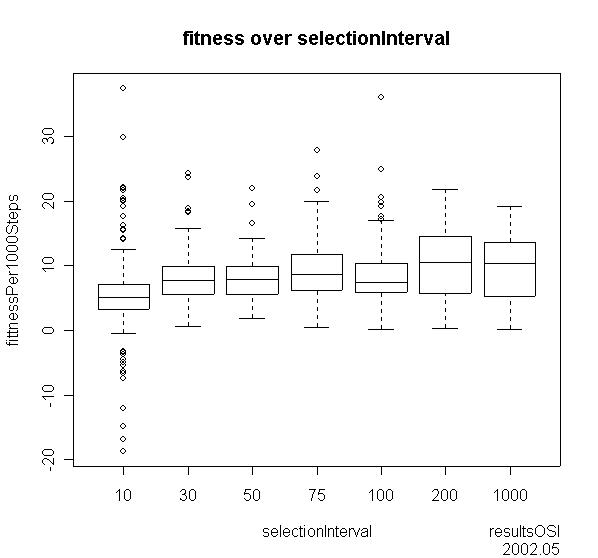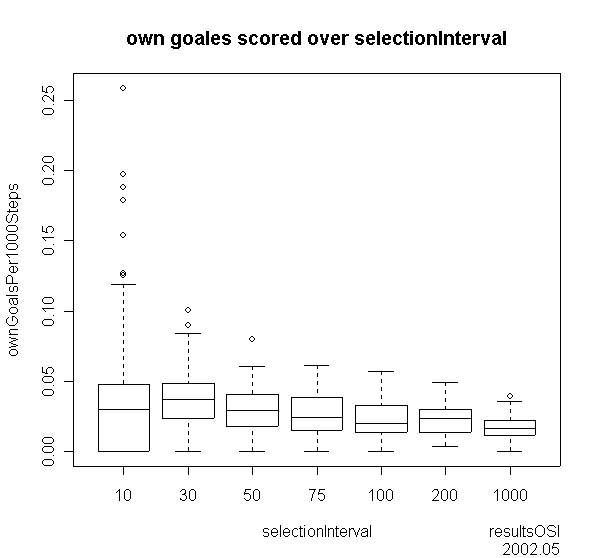| Raw data | OSi |
| Version | vsoc 0.04-vsoc 0.05a |
| Class | vsoc.camps.goalgetter.GGTestRunOSI |
| Project homepage | http://vsoc.sourceforge.net |
The goal of this test was to determine the optimal selection interval for test runs. This means how many matches should be played before a new generation of players should be generated. Of cours longer selection intervals result in better performance because the diffrent players are oftener tested. But long selection intervalls extend the development time and should be avoided if possible. The question is to find the shortest selection interval that still leads to reasonable results.
In these tests 20 Players where used in every generation. In every match 6 players (3 on every side) had to play against each other. A selection interval of 10 means that after 10 matches a 6 players. This means every player plays at an average 3 matches in one selection interval.
| selection interval | matches per player |
| 10 | 3 |
| 30 | 9 |
| 50 | 15 |
| 75 | 22.5 |
| 100 | 30 |
| 200 | 60 |
| 1000 | 300 |




The frequency plot shows that we have about 100 observations per selection interval. This should allow a reasonable analyse.
The fittness plot shows that even a selection interval of 10 results in pretty good fittness value. One of the extreme values is under the best of the whole dataset. But the average fittness for selection interval seems to be lower then for higher values of the selection interval. But already a selection interval of 30 seems to produce fitness values that are in the same range as those of much longer selection intervalls. Looking only at the poduced fittness values a shorter selection interval as the current default value of 200 seems to be a good selection.
Looking at the number of goals scored the picture slightly changes. Selection intervalls of 100 or greater seem to perform better.
The number of own goals shows a falling trend even between 200 and 1000. They seem to indicate the expected beaviour of better results for long selection intervals. But again the selection interval of 10 includes extreme well performing populations. But also some very bad performing ones.
A smaller value than 200 (e.g 50) for the selection interval can be seen as a good selection as it results in quite good populations but would speed up the development process by 4.
Again the great variance of the results show that perhapst a mechanism should be implemented that stops bad performing populations at an earlyer point of time.